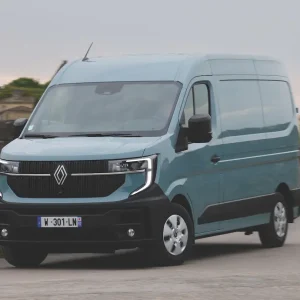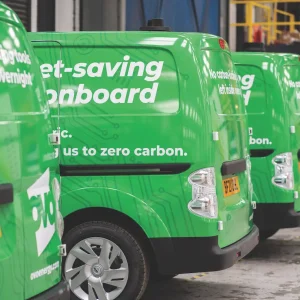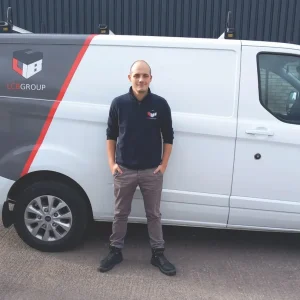This year’s award goes to a firm that has resurrected one of the UK’s fondly recalled traditions.
For those of us old enough to remember, a familiar sound in the early mornings of the 1960s and 1970s was the tinkle of glass bottles being delivered to the doorstep by a milkman or woman who had arrived silently aboard an electric milk float.
But come the 1980s a combination of supermarkets being licensed to sell milk and the need for speedier (diesel-powered) milk vans to cover longer distances led to the demise of the electric milk carts.
Now, however, with environmental concerns heavily influencing LCV fleet decisions and with battery technology advancing apace, Milk & More is leading the charge in bringing back the electric delivery service.
During 2018 and 2019 it has invested in 350 electric vehicles (based on a five-year replacement cycle) and expressed its intentions to increase this number as part of a wider strategy to reduce the company’s carbon footprint and impact on air quality.
Milk & More now has more than 500 electric vehicles, which it claims gives it the largest EV fleet in the UK. It says its fleet covers 14 million miles annually, which results in a saving of 3.4 million litres of diesel.
By 2025 Milk & More wants 90% of its fleet to be electric before moving on to be completely battery-powered when the technology allows.
The firm has so far invested in two types of electric van. The StreetScooter was originally designed for the German postal service Deutsche Post and has been mass produced since 2016. Between March and June 2018, Milk & More acquired 200 StreetScooters, which have a range of up to 70 miles and a payload of 965kg.
From June to October 2019 the company expanded its plug-in van fleet with 159 LDV EV80s, which have a longer range of 120 miles, making them suitable for larger rounds, and boast a payload of 1,200kg, which Milk & More says is comparable to its existing diesel vans. The firm claims the EV80’s high-capacity lithium battery can be fully charged within 90 minutes.
Milk & More was meticulous in its research before deciding which electric vans would meet its requirements, recording the mileage and carrying capacity needed for every route. Its fleet managers then matched the most suitable van to each route in terms of range and load-carrying capacity, working out which vehicles needed to be replaced or reallocated to other sites.
“The analysis ensured optimal efficiency, value for money and a positive experience for drivers,” the company says.
Having trialled some other electric vans that did not meet its needs, Milk & More began working with LDV, collaborating with the manufacturer’s engineers to refurbish and modify the bodies of its old diesel milk floats to fit the electric models. The vans have removable shelves, a chilled plate for perishable goods, and side curtains.
With most deliveries made between 11pm and 7am, there is sufficient downtime during the day to permit slower charging, which is cheaper. A 7kWh chargepoint has been installed for each vehicle, with the LDV vans using dual-socket, smart chargepoints. Milk & More says that due to its historical use of milk floats and slow charging, many of its sites already have sufficient electrical supply capacity without the need for an upgrade.
Milk & More provided EV training to its drivers to ensure they were familiar with features such as regenerative braking, which can extend range, and with operation and charging procedures.
The electric vans are serviced every 13 weeks and undergo routine checks every day.
Highly Commended: Gnewt
Gnewt by Menzies Distribution operates a fleet of 100 plug-in vans – the UK’s largest all-electric parcel-delivery fleet. Gnewt pioneered its business in London where it enables its customers to offer green deliveries with zero CO2 and NOx emissions.
The firm’s depot in Bow is home to 60 smart interconnected chargers, the largest collection of its kind in London. This means it is not reliant on public infrastructure and the constraints that presents. Gnewt drivers plug in their vehicles in the depot overnight and return in the morning to a fully charged van that lasts the working day. The company is soon to add another 20 chargers, increasing scalability.
Gnewt is in the process of introducing 10 V2G (vehicle to grid) units at its hub in Bow, to maximise efficient use of the grid’s power by feeding energy back from the vehicles at peak times while charging them during off-peak hours.






